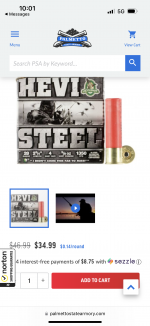John Singer
Well-known member
It's the off season, let's have a discussion.
First, let me qualify. I hunt strictly with nontoxic shot. I have for several years now.
I have been using steel for waterfowl hunting since before the national ban on lead shot.
I pheasant hunt a number of State and Federal properties where nontoxic shot is required.
A couple of years ago, I started using bismuth for pheasants. I found it to be quite effective. However, I do not think it is more effective than steel shot. Bismuth is definitely softer than steel, and it can safely be fired in old guns with a fixed full choke.
In my experience, it is not more effective and not worth the additional cost for either pheasant or waterfowl hunting.
Have any of you found bismuth to be more effective than steel?
First, let me qualify. I hunt strictly with nontoxic shot. I have for several years now.
I have been using steel for waterfowl hunting since before the national ban on lead shot.
I pheasant hunt a number of State and Federal properties where nontoxic shot is required.
A couple of years ago, I started using bismuth for pheasants. I found it to be quite effective. However, I do not think it is more effective than steel shot. Bismuth is definitely softer than steel, and it can safely be fired in old guns with a fixed full choke.
In my experience, it is not more effective and not worth the additional cost for either pheasant or waterfowl hunting.
Have any of you found bismuth to be more effective than steel?
Last edited:




